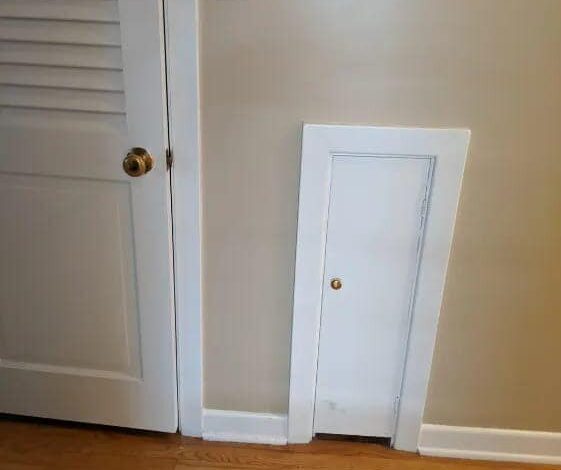n the world of vintage homes constructed before 1950, an unexpected discovery often captures the imagination: the presence of unassuming, tiny doors tucked away in the walls. These curious doors have led many to ponder their purpose, giving rise to theories of secret passages and hidden treasures. However, the truth behind these miniature portals is much more pragmatic and rooted in history.
Contrary to the popular assumption of concealed hideaways, these small doors were not meant for clandestine activities. Rather, they served a practical purpose during the 1950s and 60s when card games were all the rage. These doors ingeniously concealed folding card tables, optimizing storage space while catering to the entertainment needs of the time. Families and friends would gather for spirited games of bridge, poker, and rummy, with the card tables easily accessible yet discreetly stowed away behind these inconspicuous entryways.

While they may not harbor hidden treasures, these tiny doors offer a glimpse into the past, reflecting the inventive design strategies of their era. These doors symbolize an age when social interactions revolved around leisurely card games and when architectural solutions maximized living space. Despite evolving roles over time, these doors have retained their historical charm, becoming cherished features in many older homes.
For homeowners fortunate enough to possess these relics, preserving them can uphold the period allure of the property. Although their original function has faded, the space within these doors can find new purpose by storing linens, cleaning supplies, or other items. Beyond their practical use, these doors hold a legacy of resourcefulness and craftsmanship from a bygone era.
In summary, these unobtrusive little doors, often misunderstood as conduits to secret chambers, have a richer and more down-to-earth story to tell. They provide a tangible link to a time when card games forged bonds, and innovative design was born out of necessity. Their significance transcends their size, offering a bridge to the past that enriches the character of vintage homes lucky enough to have them.
